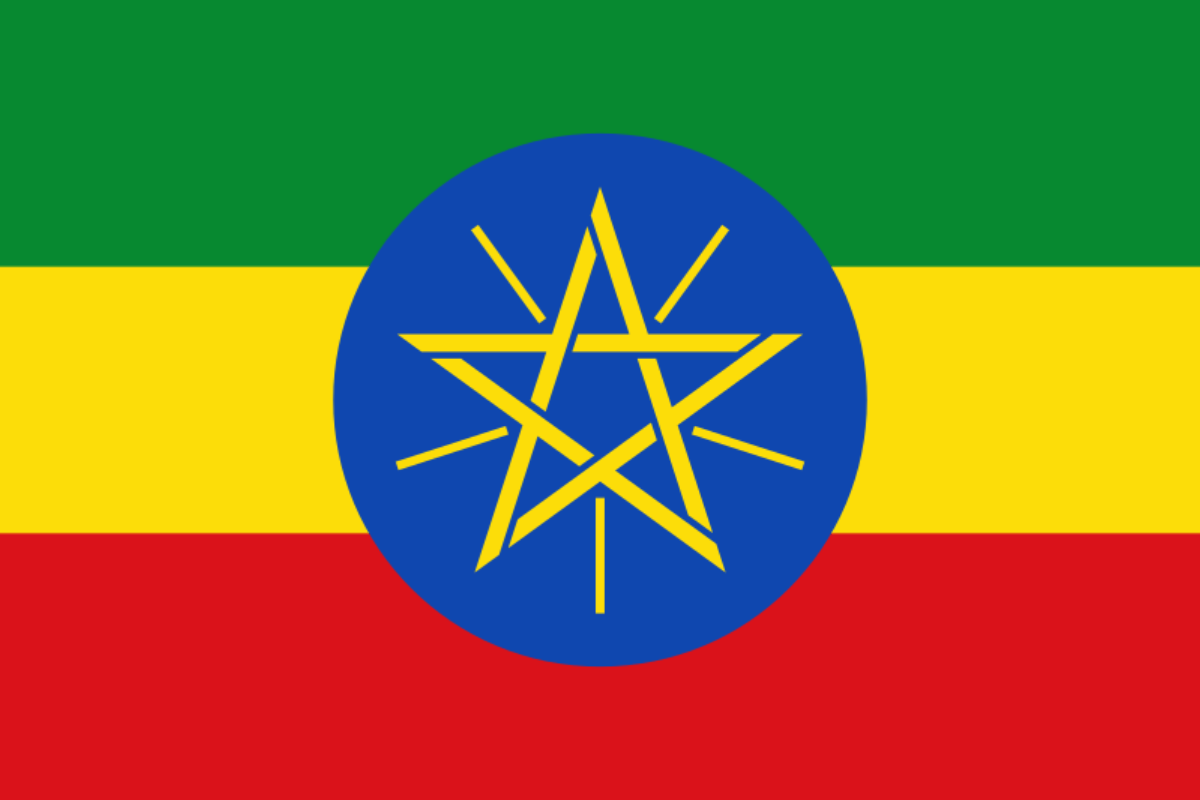The national animal of Ethiopia is the lion. These majestic big cats are fearsome, powerful animals that have influenced human thought and imagination since time immemorial. Today, in Ethiopia, they remain an important cultural symbol and at the same time were made the national animal to bring attention to their precarious conservation position and endangerment.
Lions are one of those animals which have been a part of so many different cultures that at least in some parts of the world there is a broad, shared sense of mythology and symbolism around them.
They are now endemic to Africa where once they roamed much of Eurasia too, and so are more important than ever to African cultures.
Let’s find out more.

What is the national animal of Ethiopia?
The national animal of Ethiopia is the lion. Lions are broadly very important African symbols and a number of African nations have decided to make them the national animal.
In Ethiopia they are just as important to the people both symbolically and literally in terms of the country’s broader ecosystem.
Again, lions have simply always played an important role in human imagination throughout history.
They have been seen as the king of the beasts in many different cultures across time and in Africa it’s certainly easy to see why.
Where there are lions, they are the apex predator and nothing can threaten them.
Today, they are mostly found in Africa although small populations do still exist in India.
They are known for their bright, sandy colored fur and the large manes that are sported by the males.
They are a highly social species and live in large groups known as prides.
These will consist of a few adult males, then more females and cubs.
Females are generally the hunters and males are mostly breeding stock.
They tend to prey on large ungulates such as antelope and zebra.
Lions are what is known as a keystone predator.
This means that they are a species with a disproportionately high influence on their local ecosystems.
Without them, things would collapse in a very big way, as prey population sizes would increase, decimate plant life, and the knock on effect would continue on.
Historically they had a much larger range than they do now, in the Neolithic period being found from Africa through Eurasia and India.
Today their populations are fragmented and found mainly in sub-Saharan Africa and one single population in western India.
Why is the lion the national animal of Ethiopia?
The lion is a very important national and cultural symbol in Ethiopia.
Of course there are many aspects of the symbolism of lions that are easy to understand.
As the king of the beasts they are symbols of enormous strength and power, yet at the same time courage, good leadership, and even elegance and majesty.
These animals have an indelible effect on human thought and have for as long as we have been in contact with them. all of these values, then, in the modern day, are very important to Ethiopia and its people.
On the other hand, though, one very common reason that an animal is chosen as the national animal of a country is because of its precarious conservation status.
Lions, unfortunately, are profoundly endangered, and if things continue the way they are now, then the species may be entirely extinct in the wild within a few decades.
Making the lion the national animal is a great way to draw greater attention to this, and certainly populations in Ethiopia are far reduced from where they once were.
So, the lion is a very important national symbol, but at the same time they are in profound danger—so how many are left?
How many lions are left?
Globally, there are estimated to be between 20-30,000 lions left in the wild.
As mentioned, almost all of these are now in sub-Saharan Africa.
This number may seem like quite a lot, but they are nonetheless listed as a vulnerable species who are at serious risk of extinction in the coming decades.
They are frequently hunted both as trophy animals and for various medicinal purposes their bodies are claimed to have.
They are much reduced in Ethiopia itself, too, and there are only around 200-300 individuals estimated to be left in Ethiopia.
Is the black lion only found in Ethiopia?
One variant of the lion which is endemic to Ethiopia itself is the black-maned lion, which is not found anywhere else.
These lions are not a separate species but simply a genetic offshoot with much darker fur than most lions have.
These black lions are naturally even more elusive than ordinary lions and so again they in themselves have become a very important national symbol in Ethiopia.
As you can imagine, though, these black lions are of course precariously preserved and are also the object of poaching and suffer from the loss of their habitat.
Their protection is going to be an important part of conservation going forward.
Lions are in a dangerous position, then, and unless great efforts are taken to ensure the survival of the species, then they could be in real danger.
This is part of the reason why Ethiopia, among other African countries, has decided to make the lion the national animal.
Of course they are important national symbols in their own right, but no doubt the Ethiopian government also hopes to bring attention to their dangerous conservation status.

